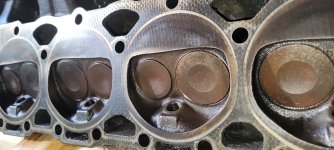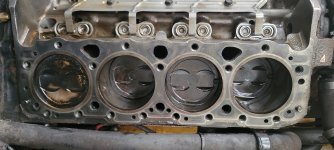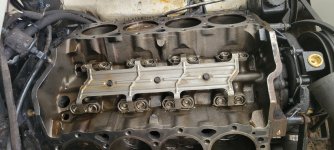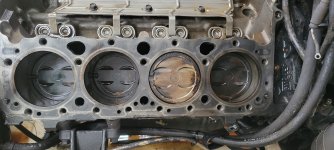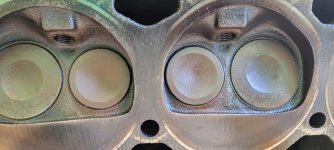Augoose
Lieutenant Junior Grade
- Joined
- Mar 21, 2010
- Messages
- 1,242
Thanks all. I will look into the magnaflux service. I sprayed wd-40 over everything to keep the rust down while I wait on gaskets, so I suppose I'll need to get that cleaned off before testing.
Great point about the exhaust ports in the center.
My metal straight edge seemed to slide right across with no gaps, but .003" is really small. Thanks ESG for the links as well.
I did find one crack in a bolt hole - see red circle in image "head 2". Thoughts on that?
Also, the surface on both the block and heads between both center cylinders is more worn than other areas, so much that you can't make out the outline of what looks like a cylinder sleeve?
Great point about the exhaust ports in the center.
My metal straight edge seemed to slide right across with no gaps, but .003" is really small. Thanks ESG for the links as well.
I did find one crack in a bolt hole - see red circle in image "head 2". Thoughts on that?
Also, the surface on both the block and heads between both center cylinders is more worn than other areas, so much that you can't make out the outline of what looks like a cylinder sleeve?
Attachments
Last edited:




















